#d&d 2e
Explore tagged Tumblr posts
Photo
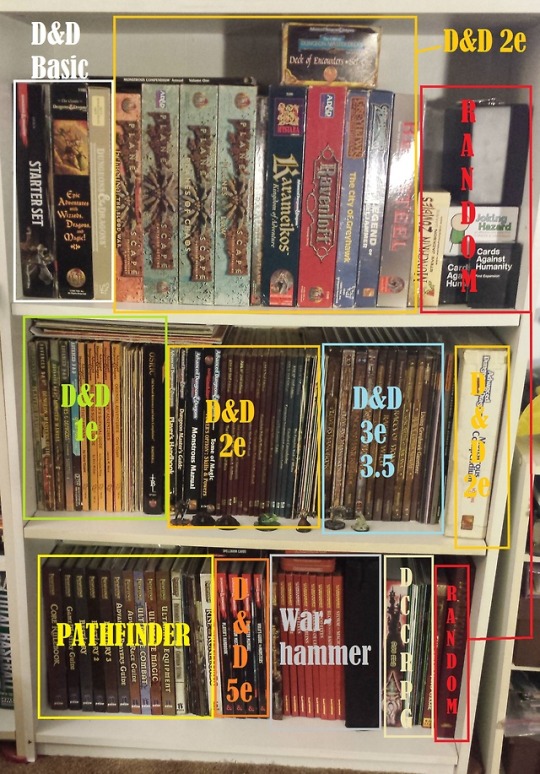
My D&D collection,
#d&d#d&d 1e#d&d 2e#d&d 3e#d&d 3.5e#d&d 5e#dungeons & dragons#dungeons and dragons#pathfinder rpg#warhammer fantasy#dcc rpg#basic dungeons & dragons
19 notes
·
View notes
Text
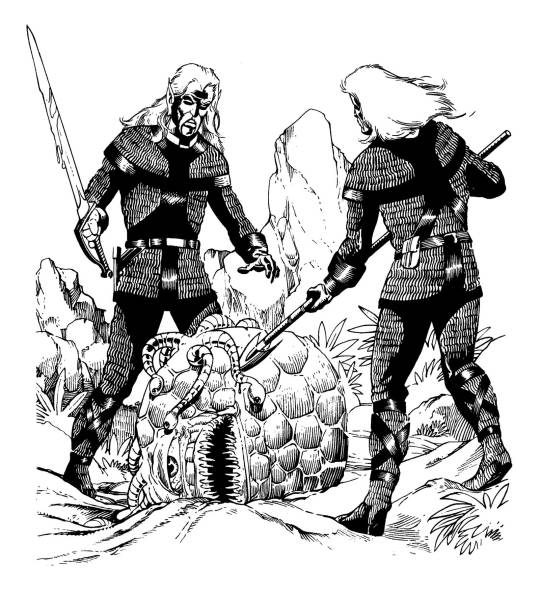
No one is going to believe we took this thing down by ourselves (Mark Nelson, AD&D 2e supplement DMGR3: Arms and Equipment Guide, TSR, 1991)
#Mark Nelson#drow#beholder#D&D#Dungeons & Dragons#Arms and Equipment Guide#AD&D#D&D 2e#AD&D 2e#dnd#drow chain mail#drow chainmail#Dungeons and Dragons#TSR
90 notes
·
View notes
Photo
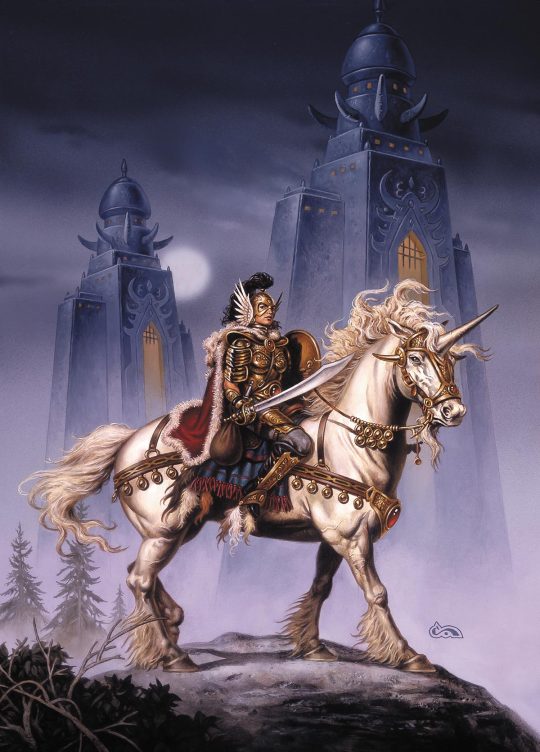
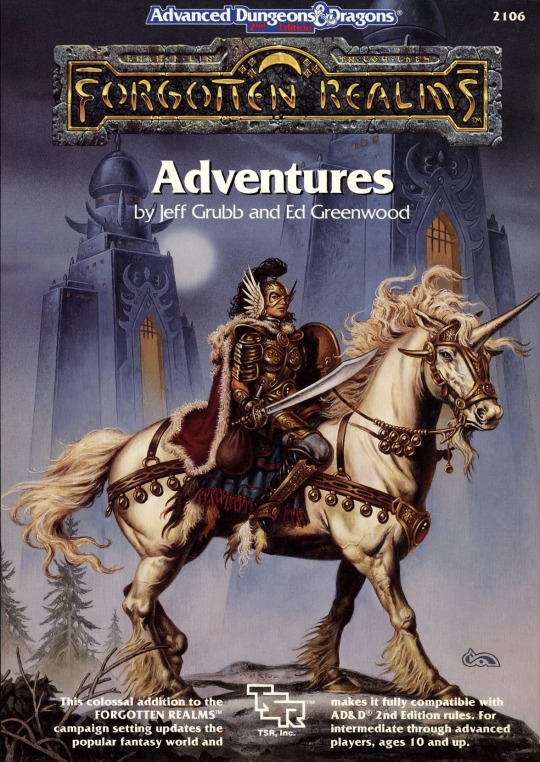
Clyde Caldwell, Allisa of the Mists, 1990. Cover illustration for Forgotten Realms Adventures, by Jeff Grubb and Ed Greenwood (TSR, 1990). Oils, 17 x 22.5 inches.
__________________________________________________ Our shop: https://bookshop.org/shop/manyworldspress
#clyde caldwell#alissa of the mists#Forgotten Realms#dungeons & dragons#advanced dungeons & dragons#d&d 2e#fantasy art#game art#fantastic illustration#tsr hobbies#allisa of the mists#paladin#unicorn
73 notes
·
View notes
Text







Some of the cooler stuff found while going through the d&d stuff my dad gave me
9 notes
·
View notes
Photo
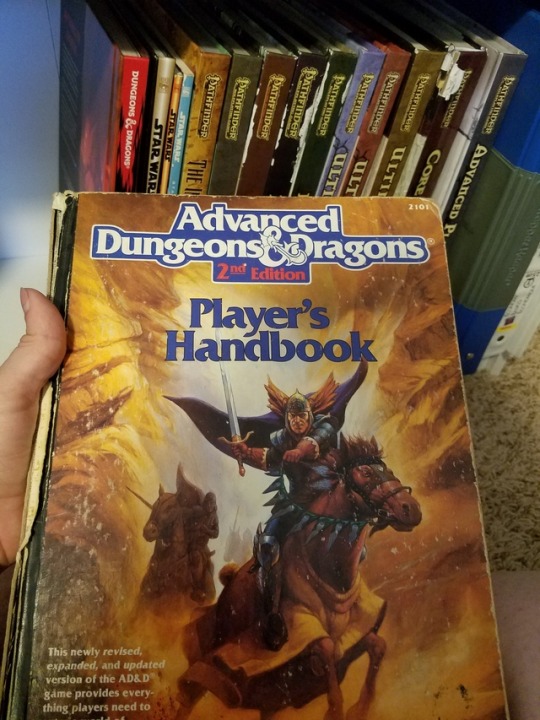
I found this really really old d&d book with my husbands pathfinder books while I was unpacking them. I didnt even realize he had this. Its super neat. I t reads like a textbook though.
4 notes
·
View notes
Text
Planescape Creature Idea: Referearch
These wispy and striped spirits hail from the Peaceable Kingdoms of Arcadia. There, they preside over polished courts or neatly mowed and painted fields, allowing creatures to visit for a wholesome competition - as long as they can follow the rules. Sometimes they visit other planes as well, to learn new games and update their knowledge. From the gory contests of battle on Acheron to the psychic art duels of Limbo, there is not much that can harm the incorporeal Referearch. They do clash with the Valkyries of Ysgard, who love competition but are more concerned with style than with regulations.
If a Referearch witnesses someone cheating, fighting unfairly, or using unsportsmanlike language, they usually give them a Yellow Token of Dishonor, which is a cursed item preventing them from taking hostile actions or moving more than half their speed for one minute. A repeated offense or serious infraction invokes the Red Token of Banishment, which sends the creature to its home plane (or a random location about 100 miles away, if it is on its home plane.)
Some mortals have seen a vision of a Referearch and decided to follow their example, wearing a striped shirt and blowing a whistle to imitate their trademark screech.
20 notes
·
View notes
Text






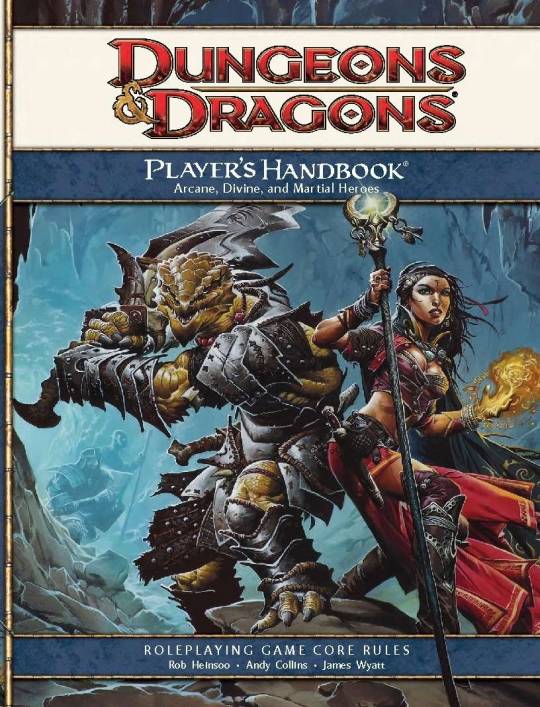

#dungeons and dragons#ttrpg#rpgs#dungeonsanddragons#d&d#thoughts#tumblr polls#my polls#polls#poll time#dnd#dnd5e#dungeons & dragons#od&d#D&D basic set#Basic D&D#ad&d#1e#ad&d 2e#advanced dungeons & dragons#d&d 2e#d&d 3.5#D&D 3e#d&d 4e#d&d 5e#d&d 5th edition#adnd#poll#random polls#tumblr poll
18 notes
·
View notes
Text
D&D and Pathfinder RPers tell me what you think.
#pathfinder#pathfinder 2e#pathfinder 1e#pathfinder monsters#dungeons and dragons 3.5#dungeons and dragons 3.0#Dungeons and Dragons 1e#Dungeons and Dragons 2e#Dungeons and Dragons 4e#Dungeons and Dragons 5e#D&D#advanced dungeons and dragons#d&d monster#d&d 5e#d&d 3.5#d&d homebrew#D&D 1e#D&D 2e#D&D 3.0#D&D 4e#hags
5 notes
·
View notes
Text
DragonFinds I got a real DND treasure today. I found the original Council of Wyrms DND2e boxset today. this complete box is one I have fond memories of though we had the book instead.

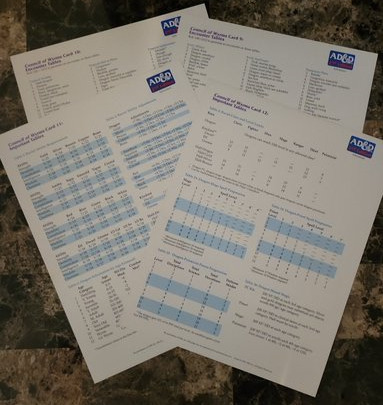
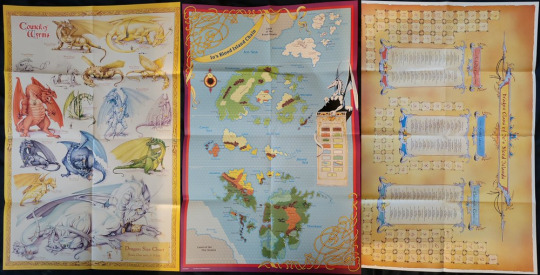
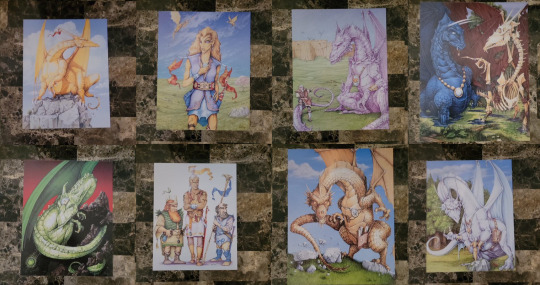
#DragonFinds#dnd#dnd art#dungeons and dragons#rpg#tsr#ttrpg#forgotten realms#dnd 2e#D&D 2e#Council of Warms
4 notes
·
View notes
Text
“We’re here interviewing the people of Falkovnia, who seem to have only great things to say about their ruler. So, friends, who do you think burned down the Mistral farmhouse with the Mistral family locked inside? A freak gust of wind you say…”
Idea: be the first people in Ravenloft to invent Chicago style citation format! Wait.
Idea: a Ravenloft Domain of Dread based on the gangsters of 1920s Chicago!
New D&D party - True Crime podcasters who are trying to make episodes on the various Dark Lords
296 notes
·
View notes
Text
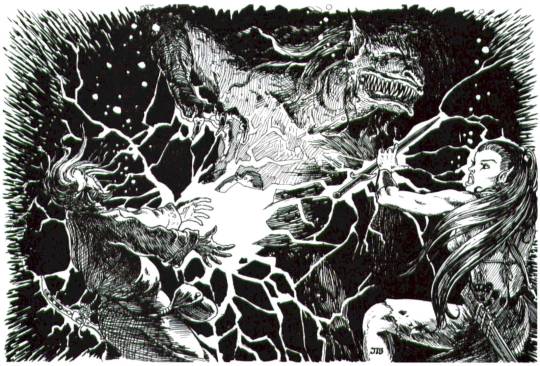
Friendly fire (John Snyder, AD&D 2e supplement DMGR9: Of Ships and the Sea by Keith Francis Strohm, TSR, 1997) This supplement includes a 28-page chapter describing how many spells and magic items work differently underwater or fail to work at all. Here we see the unintended effects of shocking grasp, discharging in a 5-foot diameter sphere affecting all creatures including the caster.
#D&D#Dungeons & Dragons#John Snyder#wizard#unnecessary rules#Of Ships and the Sea#D&D 2e#AD&D#AD&D 2e#dnd#mage#magic user#scrag#troll#marine troll#shocking grasp#underwater adventure#Keith Francis Strohm#TSR#Dungeons and Dragons#1990s
40 notes
·
View notes
Text

Kani, my level 5 Ban Lung (Earth Dragon) Geisha/Pirate from my AD&D 2e Kara-Tur game 💕
#shunbun#theshunbun#kawaii#princess#pinup#potato#tato#kawaii potato#art#oc#goddess#soft#AD&D#2e#Dragon#pastel#comic#gentle reminder#daily reminder#self reminder#soft reminder#patience#Kani#Ban Lung#loving#january#2025#support#fashion#Kara-Turn
881 notes
·
View notes
Text
Great discussion about an AD&D 2e megadungeon campaign, examining the interplay of architecture design, random encounter rolls, and player choices
Since I've had a few people asking about megadungeon stuff recently, and I am an avowed megadungeon megafan, I thought it might be fun to walk through an actual example of megadungeon play that exemplifies what I like best about it.
This post is going to be the first in a series talking about a room from a megadungeon that I ran over 20 years ago (brushing past that fact quickly lest the horrors set in.) It was a major room, probably the most complex and important in the dungeon, and the players passed through it frequently throughout the campaign. In this post I'll introduce you to the room, and then in later posts I'll talk about what it does well and how to use that lesson more generally. Below the cut is a reproduction of the map as I remember it.

Without getting into The Lore too deeply, some dwarves accidentally dug into hell, as one does. Classic trope, nothing wrong with using them. They quite sensibly shut the mine down and sealed if off, but word got out. A human king heard about this, and took over the mine, expanding it into a temple complex to curry favour / barter with hell. It went badly, as such things do.
This concourse connects several wings of the dungeon, spanning several floors. An enormous devil face statue emerges from the northern wall, above the second floor balcony and below the fourth, and a column of light shines through a hole in the ceiling onto the center of the floor. Several floors of balconies overlook the chamber, though the stairs to the fourth floor balcony have long since collapsed.
This chamber was not too far from the main entrance, with the party first encountering it on their second delve into the dungeon, though it would take two more delves for them to gather the courage to enter it. At the time they first encountered it, it was swarming with imps and other little devils worshipping the big face.
I'll summarize the key:
A. Hallway from the Entry Chambers, the first and easiest section of the dungeon.
B. Doorway to the Pilgrim's City.
C. Doorway to the Unholiest of Unholies. Sealed and warded against simple spells.
D. Doorway to the Old Dwarven Quarters.
E. Doorway to the Nobles' Section. Barred from the far side.
F. Portcullis to the Pilgrim's City. The mechanism has rusted out and no longer functions.
G. Doorway to the Halls of the Clergy.
H. Doorway from the King's Inner Sanctum.
I. Doorway to the Archive.
J. Doorway to the King's Inner Sanctum, locked.
K. Doorway to The Indulgences.
Stairway from floor 1 to floor 2.
Light from the hole in the ceiling.
Broken stairs from floor 2 to floor 4.
Big ole devil face. Its eyes are a one-way illusion, allowing anyone within the face to view the room below.
Okay that's a lot, thanks for sticking it out. While I don't want to wander too far off topic into the rest of the dungeon, I'll just briefly note that the Pilgrim's City and Old Dwarven Quarters are easier sections of the dungeon, the Nobles Section and Halls of the Clergy are slightly more difficult, the King's Inner Sanctum, Archive, and Indulgences are very dangerous, and the Unholiest of Unholies is, as one might expect, where the worst things (and best loot) in the dungeon are. This was 2nd edition AD&D, so there was not a presumption of fights being balanced, and traipsing through more dangerous sections of the dungeon at lower levels wasn't uncommon. The players also understood the varying levels of danger fairly implicitly, since the custom at the time was that any time you went a level further away from whatever the ground floor was, things got more dangerous. The only exception to this is the Unholiest of Unholies and I think we can agree that when it's beyond a magically sealed door under a giant devil head the danger is telegraphed.
Next post I'll start talking about what made this room work so well in practice.
790 notes
·
View notes
Text
Dog Physics

(Not to scale)
#adnd#ad&d 2e#rpg#ad&d 1e#dungeons & dragons#ad&d#tabletop#ttrpg community#ttrpgs#ttrpg tumblr#ttrpg#dog#dungeonsanddragons#dungeons and dragons#dungeon and dragons#dungeon master#game master
263 notes
·
View notes
Text

jaguarundi catgirl catfolk swashbuckler/former gladiator for a pathfinder 2e westmarches i may jump into
#Pathfinder#pathfinder 2e#dnd#dungeons and dragons#d&d#ttrpg#ttrpgs#anime art#manga style art#manga art#retro manga#traditional art#sketch#roughdraft#artists on tumblr#Semi hiatus
188 notes
·
View notes
Text

IT'ᔕ ᒍᑌᔕT ᗩ ᗪOOᖇ!
#dungeons & dragons#dungeons & dragons 5e#dungeons & dragons memes#d&d#d&d 5e#d&d memes#dungeons and dragons#dungeons and dragons 5e#dungeons and dragons memes#pathfinder#pathfinder 2e#pf2e#ttrpg#ttrpg memes#tabletop roleplaying games#tabletop roleplaying#rpg#rpg memes#its always sunny in philadelphia#its always in philadelphia memes#charlie#charlie day#charlie work#meme#memes#funny#lol#comedy#geeks#nerds
248 notes
·
View notes